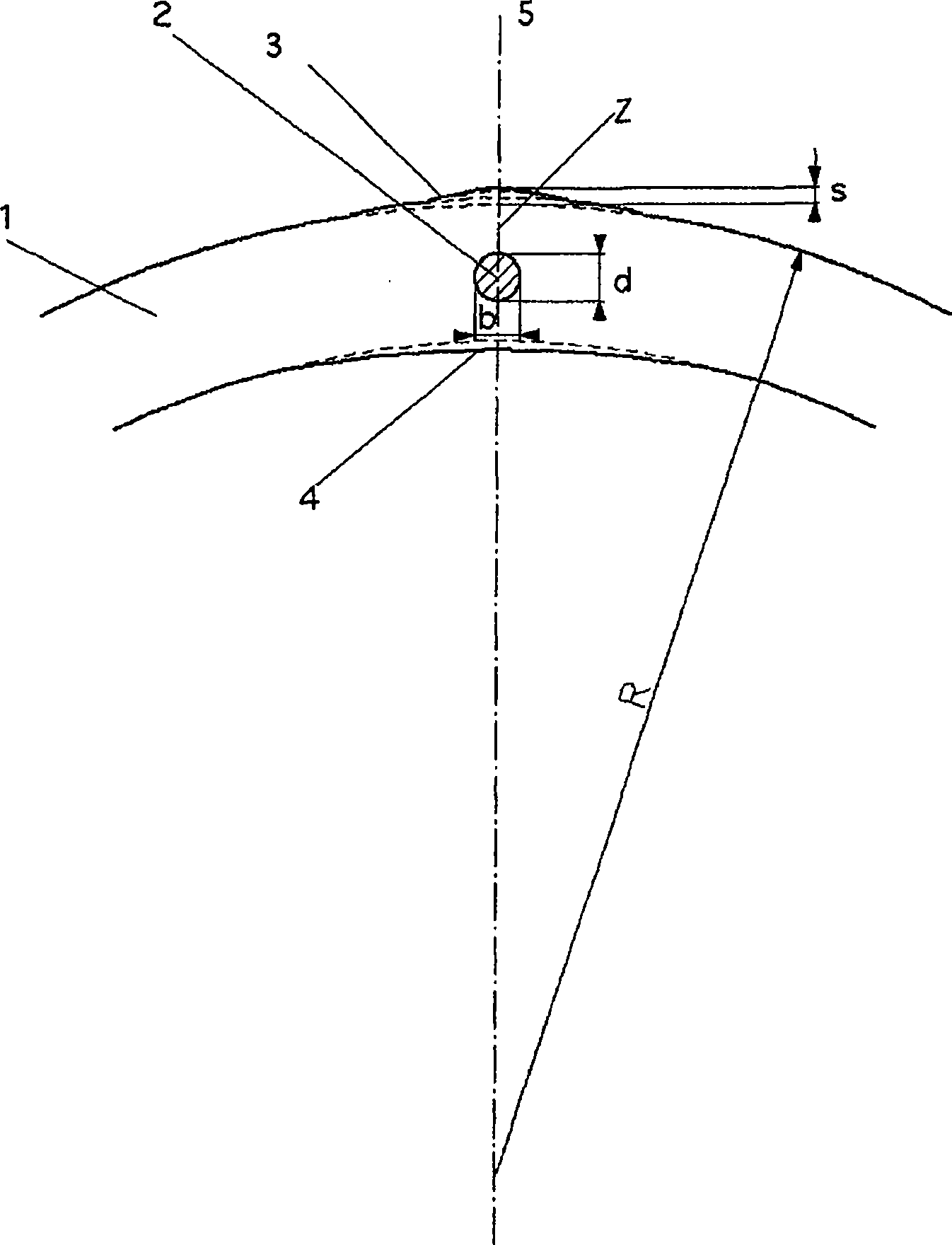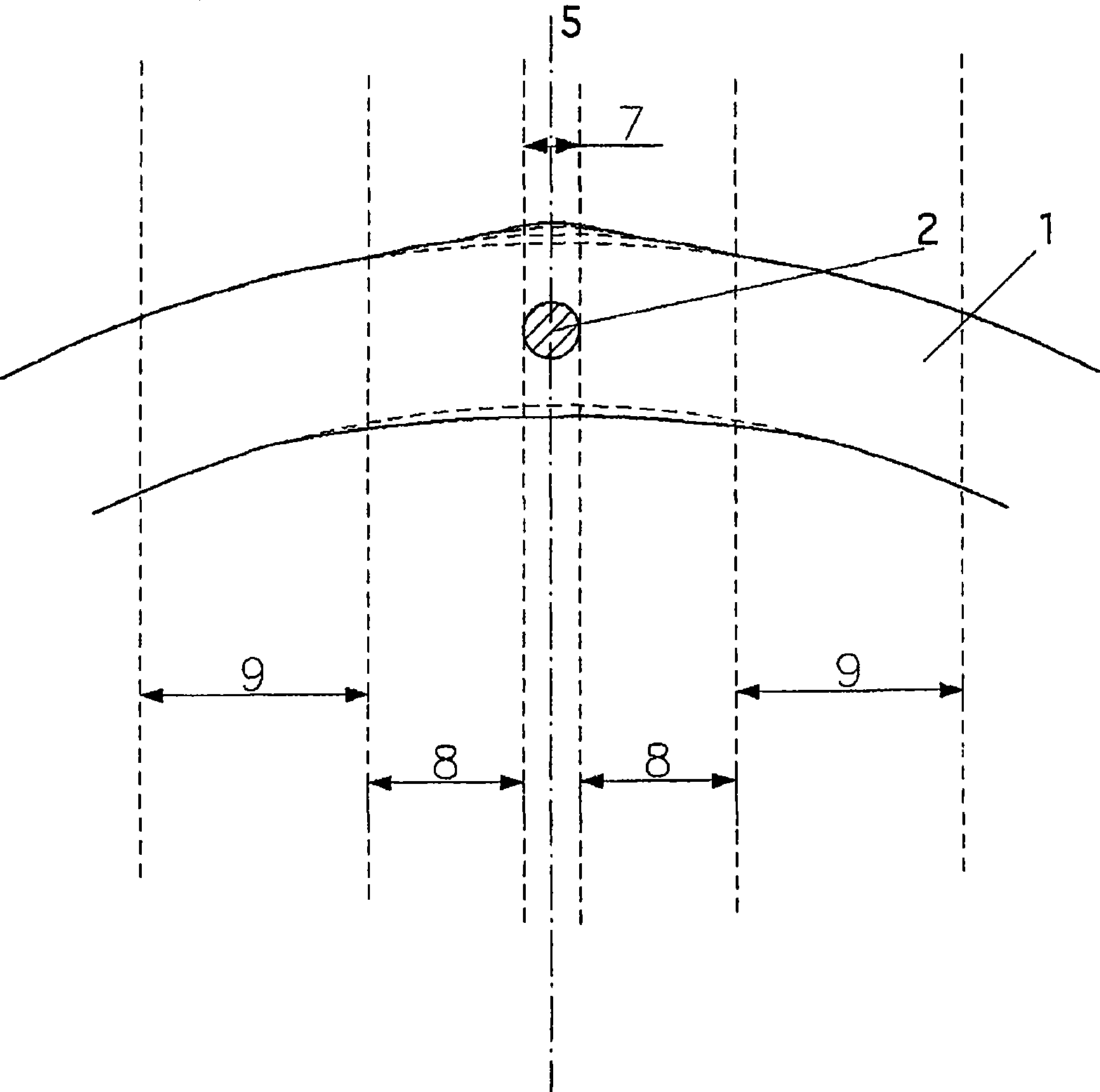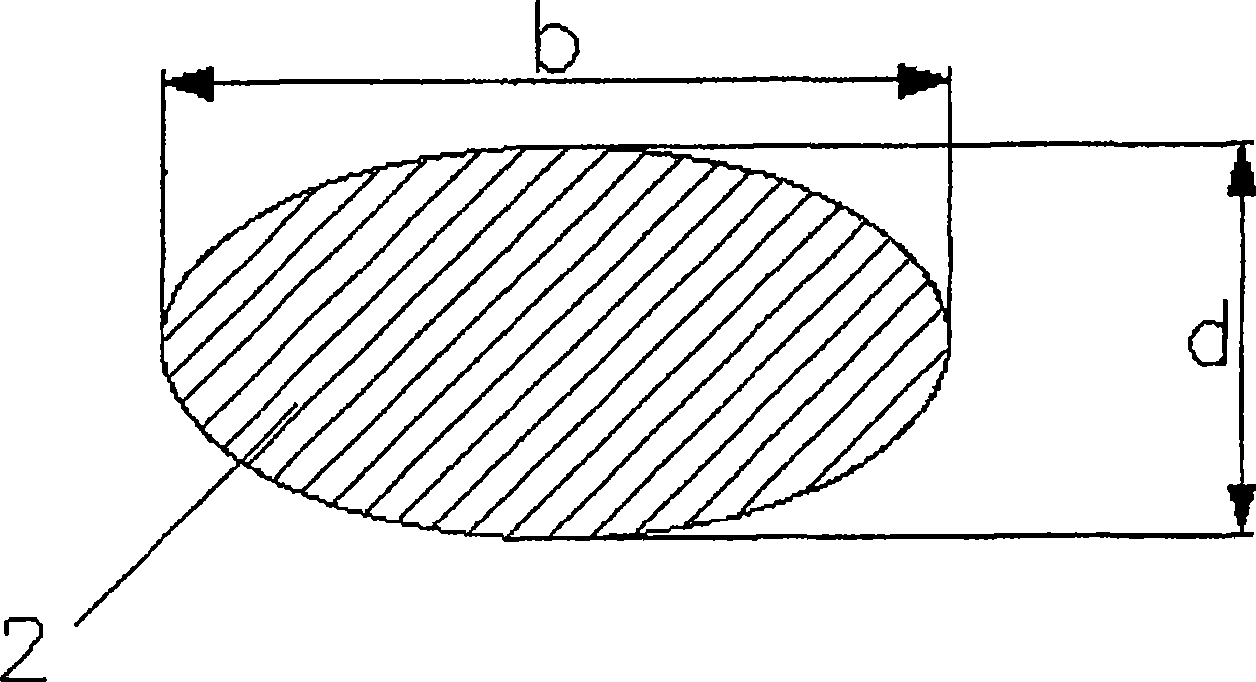Corneal implant and method for correction of impaired vision in the human eye
A refractive error, implant technology, applied in the direction of eye implants, etc., can solve the problems of shading and reflected optical phenomena, inappropriate application, interference, etc.
- Summary
- Abstract
- Description
- Claims
- Application Information
AI Technical Summary
Problems solved by technology
Method used
Image
Examples
Embodiment Construction
[0040] figure 1 A cross-sectional view of a human cornea 1 with a radius of curvature R and an optical center Z is shown. The corneal implant 2 according to the present invention is implanted in the corneal tissue of the cornea 1, the effective thickness d of the implant 2 measured in the direction of the optical axis 5 of the eye is greater than 50 μm, and the thickness d is greater than 50 μm in the normal direction perpendicular to the thickness direction. The width b measured on the intersection plane is less than 1 mm.
[0041] The corneal implant 2 has no imaging function for the human eye, that is, the incident light does not form an image on the retina (not shown in the figure) of the eye through the optical properties of the corneal implant 2 of the present invention. Instead, the effect of implanting the corneal implant 2 is that the concentrated volumes add up and thus form the aspheric surface curve 3 of the cornea 1 around the corneal optical center Z, which make...
PUM
 Login to View More
Login to View More Abstract
Description
Claims
Application Information
 Login to View More
Login to View More - R&D
- Intellectual Property
- Life Sciences
- Materials
- Tech Scout
- Unparalleled Data Quality
- Higher Quality Content
- 60% Fewer Hallucinations
Browse by: Latest US Patents, China's latest patents, Technical Efficacy Thesaurus, Application Domain, Technology Topic, Popular Technical Reports.
© 2025 PatSnap. All rights reserved.Legal|Privacy policy|Modern Slavery Act Transparency Statement|Sitemap|About US| Contact US: help@patsnap.com



